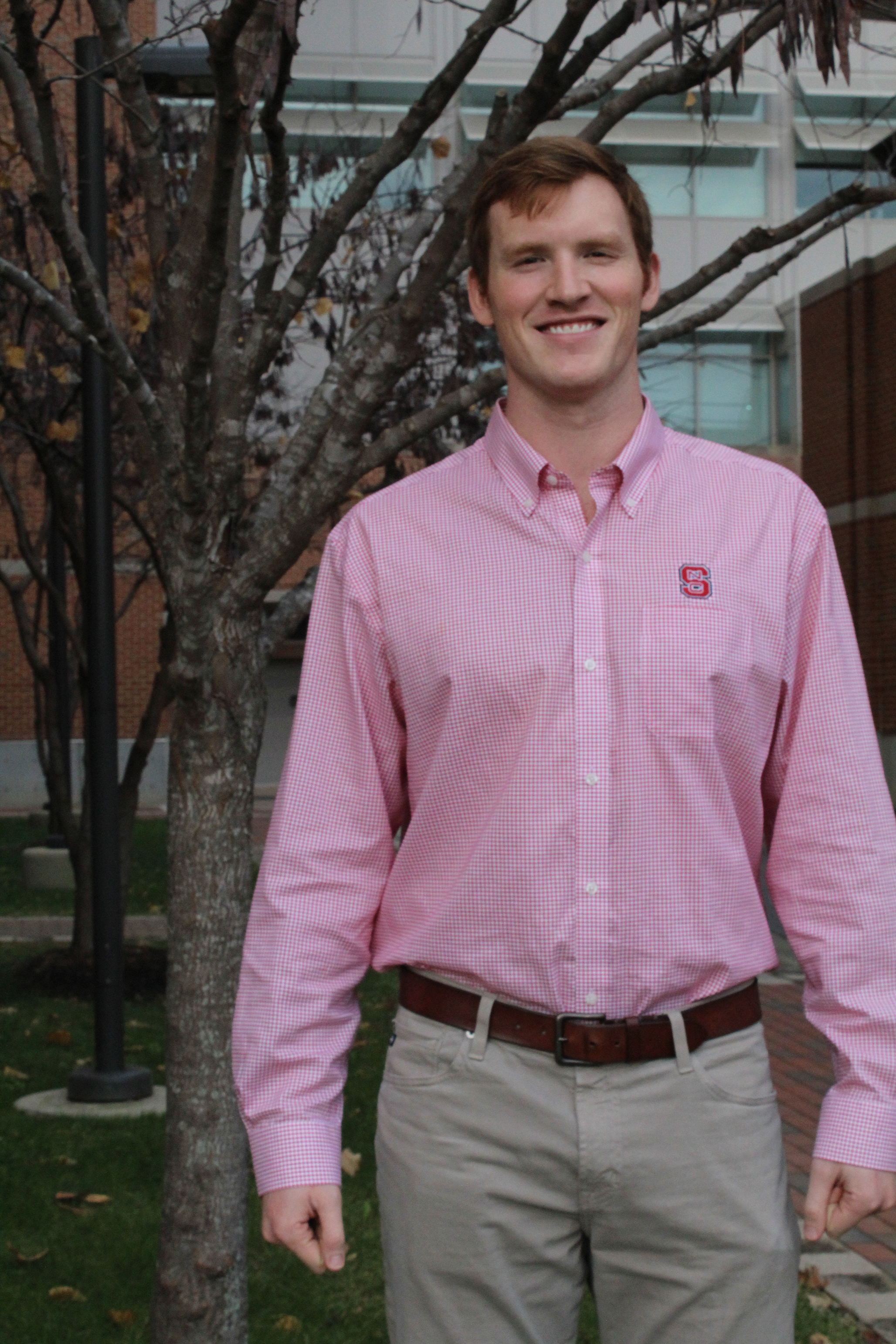TYLER JENKINS is an aerospace graduate student in the MAE Department. Jenkins recently finished co-leading a project that resulted in the development of the highly anticipated, Dash-X drone. He also co-supervised three half-time graduate students and several part-time undergraduate students. Working alongside Drs. Matt Bryant, Mark Pankow, Larry M. Silverberg, and VX Aerospace, the team was able to provide Northrop Gunman with a drone that will play a vital role in the development of U.S. Navy tactics. The Dash-X, which has been tested by the U.S. Navy, but not confirmed for use, has the ability to release from any fighter jet or bomber.
We asked Tyler a few questions about his experience. Here’s what he had to say…
1. Describe the unique experience of co-leading the development effort.
Co-leading the development effort presented many unique experiences. In particular, our team had the rare opportunity to design a UAV concept, manufacture the aircraft, and conduct flight tests. Leveraging VX Aerospace’s manufacturing know-how in conjunction with NCSU’s research & design capabilities led to an incredibly rapid timeline. It took only nine months to go from the white board to a flying, folding, full-scale vehicle – a true testament to the NCSU team members, professors, and VX Aerospace staff.
2. What did you learn in this capacity?
 The professors did a fantastic job building the team. The importance of having resilient, team-oriented individuals was repeatedly shown. In co-leading the development effort, I also learned the significance of solving non-technical problems. Ineffective communication can derail a project as easily as a technical hang-up, especially with a geographically distributed team spanning multiple universities, companies, and organizations. Concise communication and effective visual aids were key in working through these challenges.
The professors did a fantastic job building the team. The importance of having resilient, team-oriented individuals was repeatedly shown. In co-leading the development effort, I also learned the significance of solving non-technical problems. Ineffective communication can derail a project as easily as a technical hang-up, especially with a geographically distributed team spanning multiple universities, companies, and organizations. Concise communication and effective visual aids were key in working through these challenges.
3. How would you describe the experience of working with the other students?
I was consistently impressed by the team’s diverse skill set and motivation to do great work. A large part of my job was orienting the team members towards the correct problem to solve. When the team worked in sync on the highest priority design problem, difficult technical challenges were repeatedly overcome.
4. What did you learn about design?
Our team quickly learned the value of mocking up physical prototypes. A large portion of the design involves mathematical and computer modeling. However, what is possible in a computer model is not always practical to manufacture. Creating quick physical mock-ups allows the design team to gain intuition and discover potential pitfalls in a technical solution. I firmly believe that creating is the best way to learn design.
5. How does this change your understanding of engineering? How did it help prepare you for the PhD?
I now view engineering methods such as Computer Aided Design (CAD), Finite Element Analysis (FEA), analytic modeling, and prototyping as design tools within a toolbox. Understanding the fundamental strengths and weaknesses of each tool allows the designer to more effectively solve a problem. Using the design tools appropriately can lead to a strong concept that is straightforward to manufacture and test.
This experience prepared me for the PhD program in a few different ways. I have learned to approach design problems more creatively and with a wider array of techniques. I also plan to recruit undergraduate students through the MAE 496: Undergraduate Project Work course, and use a team approach to accomplish research goals.